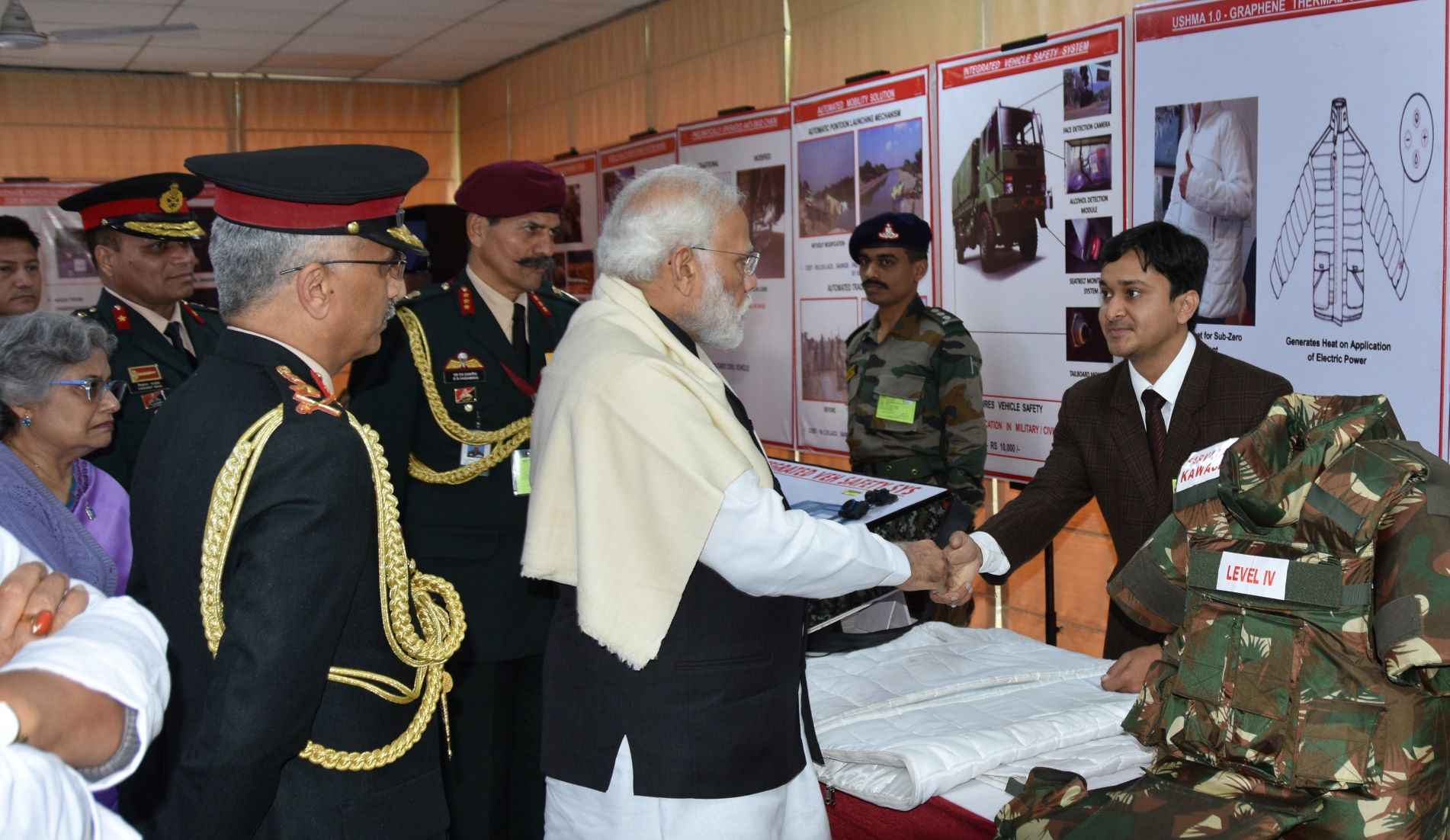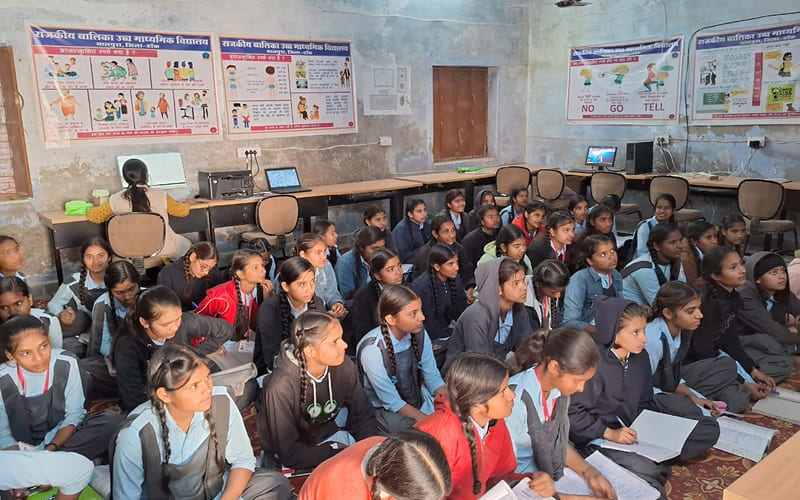
AI-Powered Graphene Jackets: Enhancing Soldier Comfort in India's Extreme Climates
Engineers Neel Panchal and Khushboo Patel developed an AI-powered graphene jacket designed to protect Indian soldiers from extreme cold in the Himalayan region. The innovation combines smart thermoregulation and advanced material science to create a lightweight, efficient thermal garment. After nearly 1,000 trials, the team developed a jacket capable of adjusting to individual body temperature needs—marking a major leap forward in wearable technology for extreme environments.
Updated on: 19 June 2025

Sector

Solution
Technology

State of Origin
Impact Metrics
Protects soldiers
from temperatures as low as -50°C.
Improves operational efficiency
in harsh Himalayan climates.
The journey began in October 2019 when Khushboo Patel, an engineering graduate, met Neel Panchal, co-founder of LHP Nanotechnologies, a startup specializing in graphene manufacturing. Neel sought to create a wearable garment for the armed forces using graphene, a material known for its exceptional strength and thermal properties. Khushboo, having worked on a similar project during her studies in the Netherlands, was the perfect collaborator. Together, they embarked on a mission to design a jacket that could withstand the extreme cold of the Himalayas.
Harnessing graphene’s potential
Graphene’s unique atomic structure makes it an ideal material for thermal regulation. Its dynamic thermal radiation properties allow it to adapt to varying temperatures, providing comfort in both hot and cold conditions. The duo’s challenge was to integrate this material into a functional jacket that could autonomously regulate temperature based on the wearer’s preferences. After extensive research and nearly 1,000 trials conducted in their home kitchen, they developed a conductive ink essential for the jacket’s design.
The development process was fraught with challenges, primarily due to the nascent stage of smart wearable technology in India. The lack of suitable industrial infrastructure for prototyping necessitated renting a space in Surat and modifying existing equipment to suit their needs. Despite these hurdles, the engineers remained committed to their vision, driven by the potential impact of their innovation on the armed forces.
AI integration for personalized comfort
A significant feature of the jacket is its AI-driven thermoregulation system. Initially, the engineers considered manual heat regulation but realized it would be impractical for soldiers in critical situations. Instead, they integrated AI to learn and adapt to the wearer’s temperature preferences, ensuring optimal comfort without manual adjustments. This smart feature, combined with graphene’s ability to protect against temperatures as low as minus 50 degrees Celsius, makes the jacket a vital asset for soldiers stationed in extreme climates.
Strategic alignment with national goals
This innovation is a testament to India’s commitment to self-reliance and technological advancement, resonating with the Atmanirbhar Bharat initiative. By developing a product that enhances the operational efficiency of the armed forces, the engineers contribute to a Viksit Bharat, or developed India, where indigenous solutions address national challenges.
Currently undergoing testing, the jacket is set to be deployed to army personnel in Ladakh and Siachen. The engineers also plan to launch a civilian version, expanding the jacket’s utility beyond military applications. With government support and grants, the venture is poised to revolutionize smart wearables in India, paving the way for future innovations in nanotechnology-based lifestyle products.
The AI-powered graphene jacket represents a breakthrough in extreme-weather apparel, combining cutting-edge science with practical field utility. Its success could signal a new era in protective wear—customizable, intelligent, and proudly made in India.
Share Your Story Today, Shape Viksit Bharat Tomorrow
Got an idea, innovation, or experience that's making a difference? Share your story now and ignite India's transformation because your voice can drive the future forward!
BUILD YOUR OWN
BUILD YOUR OWN
How can I implement this innovation effectively?
How is this innovation being adopted around the world?
Where else could this innovation make an impact?
Who has seen real results from using this innovation?
What insights do experts share about this innovation?
What policies support or influence this innovation?
How could this innovation evolve in the future?
Is this innovation accessible and inclusive for everyone?
How can I contribute to or participate in this innovation?
What resources can help me explore this innovation further?
If you would like to know more about this innovation, fill this form to contact the innovator.
Handpicked stories tailored just for you
Explore stories that inspire, inform, and ignite new ideas across tech, innovation, and real-world impact


Tele-ICU Technology Revolutionizes Critical Care Access Across India
Bengaluru-based Cloudphysician is transforming ICU care with its Tele-ICU platform, connecting hospitals to remote intensive care experts 24/7. Co-founded by...
Read More

